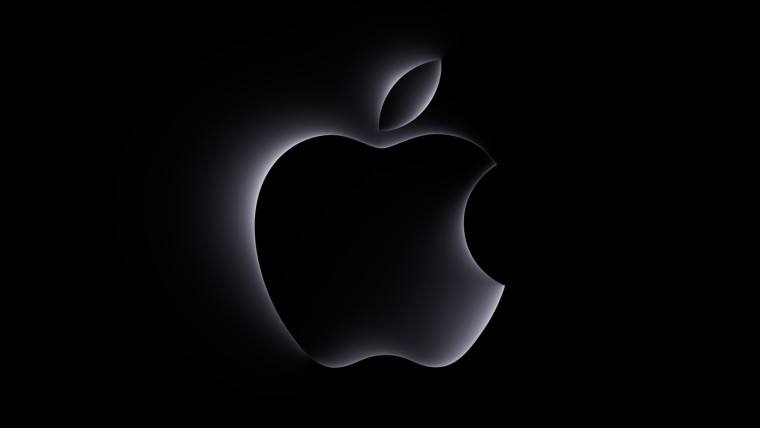Google has declared war on Apple, Amazon and Samsung
With Pixel phones, Home speakers, and Google Assistant, the search giant wants to be everywhere

Google has just declared war. War on Apple, war on Amazon, war on Samsung. War, even, on perceptions of what the search engine giant is capable of in the consumer space. At Tuesday’s much hyped event, Google made its strongest ever declaration that, more so than any other competitor, it is best positioned to become ubiquitous in every aspect of a person’s digital life. Competitors, allies, and security concerns be damned.
It started with a relaunch. Or, rather, a rebirth. Nexus, Google’s homegrown smartphone brand since 2010, is no more. Instead, we now have Pixel. Nexus devices were built in cooperation with Android manufacturers to be reference devices, something developers and users alike could enjoy for their “pure” software experience and their mid- to high-end specifications. It was all served in reasonably attractive designs and for reasonably attractive prices (2014’s Nexus 6 notwithstanding).
Pixel changes that. Brushing aside Android manufacturers — mainly Samsung — who compete to take on Apple’s iPhone, Google has decided to do things itself. With that move goes any pretence of sharing branding. HTC (who built the first Android device way back in 2008) might be constructing Google’s new phones, but their name appears nowhere on the Pixel and its larger sibling, the Pixel XL. These are “made by Google,” as advertising claims, from the inside out.

On the face of it, Google’s strategy is sound. They alone are best positioned to tackle the strongest aspect of the iPhone: Apple’s control over every aspect, from hardware to software. Google develops Android. Google designed the Pixel devices. The parallels are glaringly obvious.
That makes it all the more surprising — or, perhaps, appropriate — that Google’s first foray into Apple-style smartphones should be so derivative. At a glance, neither the 5-inch Pixel nor the 5.5-inch Pixel XL could be described as beautiful. Parallels with the iPhone abound, from the large bezels to the antenna bands, the curved sides to the glass and metal backs. If Google truly wanted to stand out, they should have made the anti-iPhone. Last year’s Nexus 6P had Cylon chic. The Pixel feels familiar — and not in a good way.
Google at least ticked most of the boxes that mattered when it came to specs. Apart from the smaller Pixel having a 5-inch, 1080p display and the larger adding half an inch and Quad HD resolution, their internals are identical. The latest Qualcomm processor, 4GB of RAM, up to 128GB of storage, AMOLED displays, rear-mounted fingerprint sensors, tough Corning Gorilla Glass 4, and USB Type-C fast charging that can add 7 hours of battery life in just 15 minutes.
While Apple embraces dual cameras, Google is touting that its single 12.3 megapixel sensor is currently the best in the world — as measured by independent tester DxOMark. It’s got large, light-absorbing pixels, a smarter Auto HDR+ function, and a revised camera app that launches faster and takes photos quicker and more accurately. To bolster their claims, anyone who buys a Pixel phone will get free, unlimited cloud storage for photos and videos.

Running everything is Android 7.1, Google’s latest version of their homegrown software. But unlike Nexus devices of old, Google has abandoned offering “pure” Android and instead developed a skin on top that adds new icons, a new app launcher, easier access to Google’s search app, and various other improvements and tweaks for usability. There’s even 24/7 support by either phone or chat, with users able to share their screen with Google’s engineers to diagnose any problems that arise.
Unfortunately, the Pixels aren’t perfect. There’s no microSD card support, no waterproofing, their batteries aren’t the largest, their profiles aren’t the slimmest, their design is certainly far from the best out there (that’s currently a toss-up between the iPhone 7 and Galaxy S7 Edge). This would be fine if Google were charging Nexus money, but they’re not. Pixel is Google’s premium brand, appearing previously on a Chromebook and Android tablet. The smaller Pixel starts at $649. The larger Pixel tops out at $869.
That’s iPhone money. It took Samsung six generations of Galaxy and five generations of Note to justify charging what Apple can for its smartphones. Google is doing so right out of the gate. That’s a bold assumption, not just that its devices are worthy of the price tag, but that consumers, who’ve thus far opted for Galaxy over Nexus, will be willing to pay that much for a phone with a Google logo on the back.
So, where’s the value? For Google, it’s seemingly in Assistant. Google Assistant is the search giant’s rival for Apple’s Siri and Microsoft’s Cortana. It’s a powerful, knowledgeable, constantly-learning AI that can engage in conversational search queries with users to facilitate their day-to-day activities. And it’s built into both Pixel phones. Ask your phone to find movies in your area and it will. Tell it “I need to bring my kids” and Google’s conversation ability will connect your statement to the previous search and then filter films by rating. Check your schedule, plan for lunch, and Google Assistant will find a restaurant, book a table and add it to your calendar, all without opening an app. It’s Google’s attempt to elbow into an area where users would previously have had to open multiple apps and input multiple fields of data just to get things done — and all without needing to know specific voice commands. Just tell Assistant what you need and it’ll do it, Google claims.

It’s something that conveys to Google’s other big announcement, Google Home, their answer to Amazon’s Echo. Two years after Amazon first launched its Alexa-powered speaker, Google is finally ready to do battle, but they’re seriously behind. Echo has 3,000 apps that allow users to search, buy, order, question, and command various aspects of their life. Home won’t launch with the same level of third-party support. Instead, it’ll focus on the basics: answering questions, controlling smart home products such as lights, playing music from Spotify, YouTube Music, Google Play and other sources, and setting timers, creating shopping lists and offering traffic updates, among other things. It’ll also connect with Google’s other products. If you own Google’s Chromecast streaming dongle, wake Google Home with “OK Google” and ask it to show you videos of John Oliver. It’ll connect to your Chromecast, automatically turn on your TV, load up YouTube and stream Last Week Tonight — all without pressing a button.

The $129 Home, which launches in November, offers support for multiple devices and will intelligently respond depending on which Home is closest to the person speaking. But it’s the potential for the future that is most impressive.
Google’s event wasn’t really about Pixel, or Home, or its Daydream View virtual reality headset, or its Wifi routers, or its new, Ultra HD Chromecast. It was about Assistant. And it was about positioning Assistant as something that will become pervasive in a person’s life. With Assistant on a phone, learning a person’s daily routine, detecting the locations they visit, liaising with the apps they install, responding to them and planning their lives, that’s a lot of data for Google to process. It’s data that can be shared directly with Home. Or with any other system that integrates Assistant, such as cars or computers in future.

Google is changing its core mandate — search — from something universal into something personal. It’s no coincidence that teasers for the Pixel launch showcased a Google search bar transforming into the outline of a phone. Assistant is Google search everywhere, in all parts of our life. Is that a security concern? For some, absolutely. They’ll worry about Google knowing too much about them, using data to drive advertisements or personalize products. But the potential is, without doubt, tempting. An ever-evolving AI, smarter than Siri, more instant than Google Search, always ready to help.
Apple trades on its exemplary hardware. Samsung trades on offering an alternative to Apple. Amazon is pushing into the home to get people hooked on its purchasing platform. Google’s Pixel phones are expensive, relatively uninteresting, and undoubtedly polished, while Home is a fledgling but promising smart home speaker system. But it’s Assistant that Google will be trading on in future. Google, everywhere, all the time.
What remains to be seen is whether consumers buy into it. Or whether its inevitability doesn’t hinge on people buying a potentially overpriced “made by Google” smartphone anyway. Assistant is the future, whether we want it or not.
Pixel, Pixel XL and Google Home are available to pre-order now directly from Google.
Support Metro Weekly’s Journalism
These are challenging times for news organizations. And yet it’s crucial we stay active and provide vital resources and information to both our local readers and the world. So won’t you please take a moment and consider supporting Metro Weekly with a membership? For as little as $5 a month, you can help ensure Metro Weekly magazine and MetroWeekly.com remain free, viable resources as we provide the best, most diverse, culturally-resonant LGBTQ coverage in both the D.C. region and around the world. Memberships come with exclusive perks and discounts, your own personal digital delivery of each week’s magazine (and an archive), access to our Member's Lounge when it launches this fall, and exclusive members-only items like Metro Weekly Membership Mugs and Tote Bags! Check out all our membership levels here and please join us today!





















You must be logged in to post a comment.